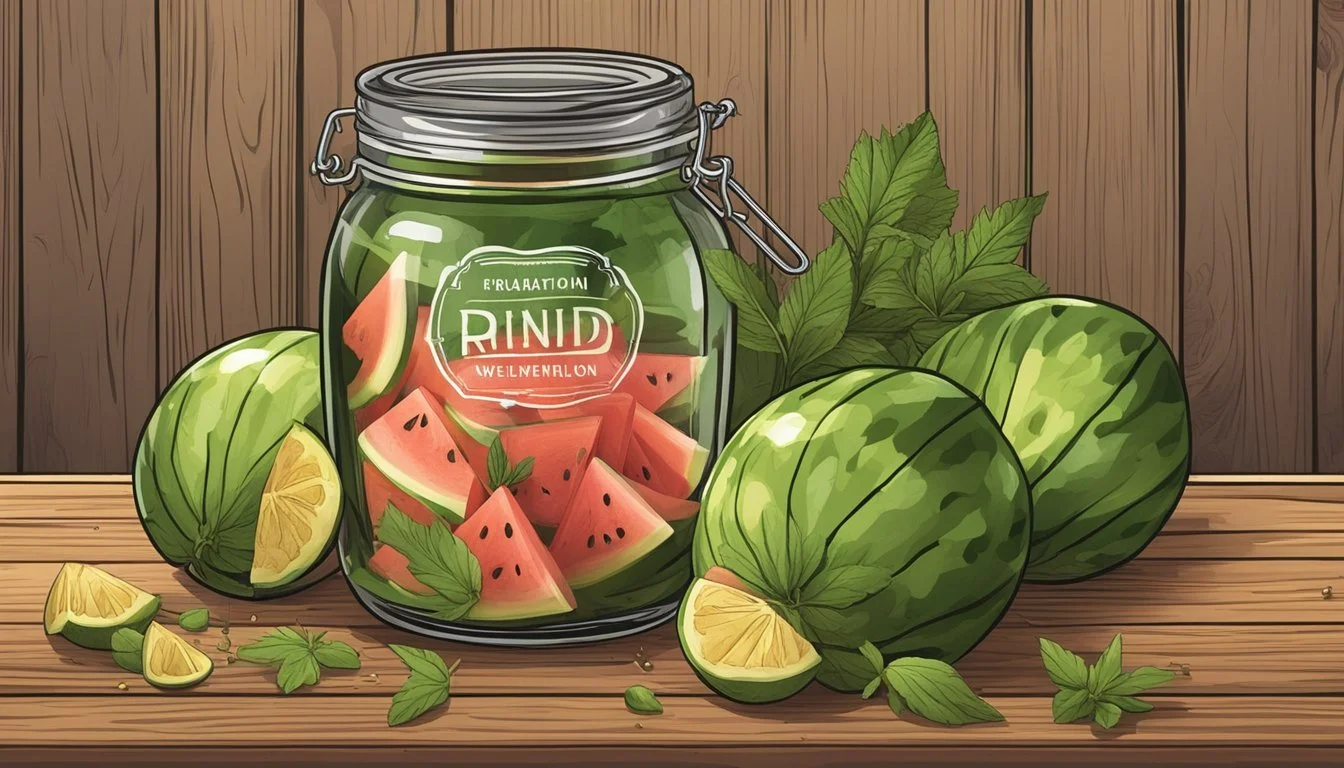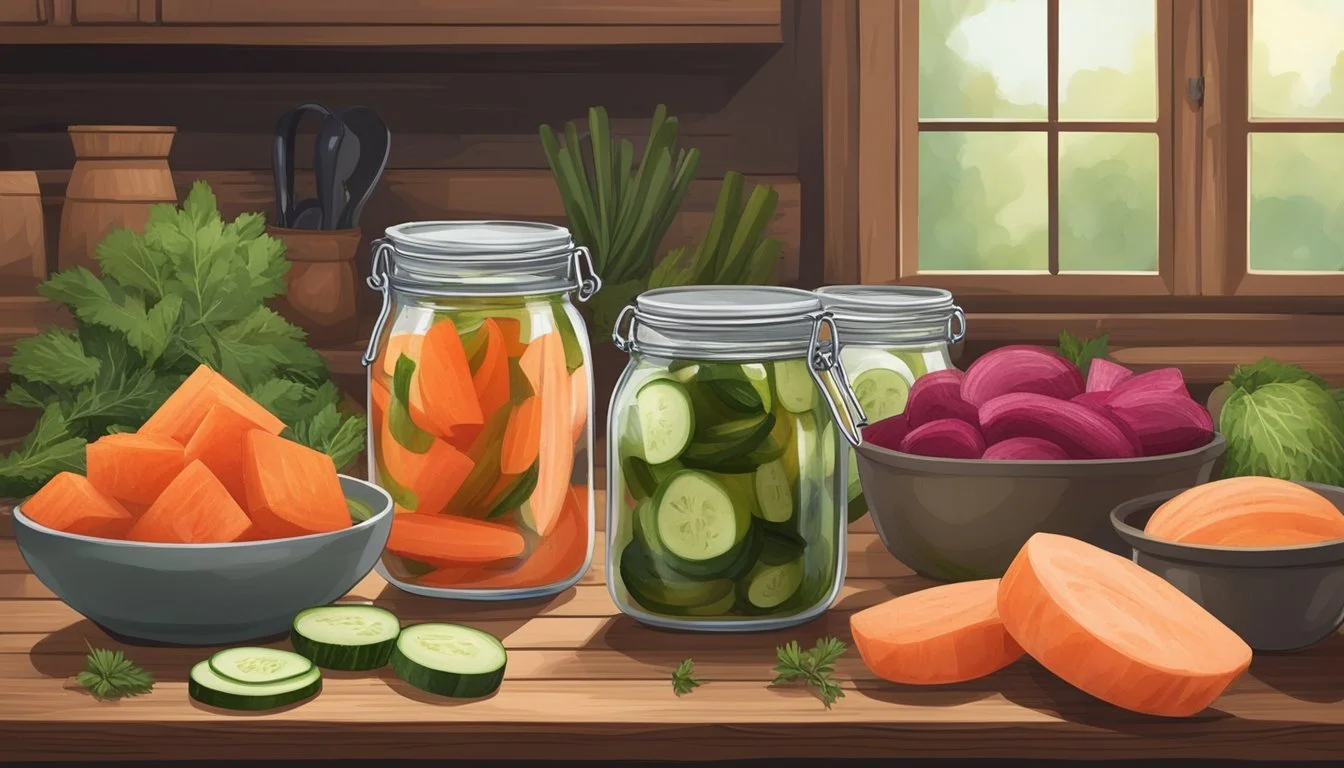Pickled Watermelon Rind Substitutes
Best Alternatives for Recipes
Finding a substitute for pickled watermelon rind can be a culinary adventure. If you’re looking to replicate the tangy and slightly sweet flavor profile of pickled watermelon rind, a good alternative would be pickled cucumbers or pickled green tomatoes. Both options offer a similar crunchy texture and can easily absorb the flavors of the brine.
Additionally, pickled daikon radish and pickled jicama are excellent substitutes. These vegetables are known for their firm texture and ability to blend well with various seasonings, providing a refreshing crunch that resembles pickled watermelon rind. They can be used in salads, sandwiches, or as standalone snacks.
Lastly, for those interested in trying something different, pickled ginger or pickled carrots can also serve as unique substitutes. These options bring a distinct but complementary flavor to dishes, enhancing the overall taste profile while still providing the desired tanginess and sweetness. Exploring these alternatives can add an exciting twist to your culinary repertoire.
Understanding Pickled Watermelon Rind
Pickled watermelon rind transforms this often discarded part of the fruit into a flavorful and nutritious addition to various dishes. This section explores the composition, taste, health benefits, nutritional value, and culinary uses of pickled watermelon rind.
Composition and Flavor Profile
Pickled watermelon rind is made from the white part of the rind after removing the green skin and any excess red flesh. The primary ingredients include vinegar, sugar, salt, and various spices like pickling spices, allspice, and peppercorns.
The pickling process imbues the rinds with a sweet, tangy, and slightly spicy flavor. The texture is often crispy and retains a slight crunch even after pickling, making it a delightful addition to dishes where texture is key.
Health Benefits and Nutritional Value
Watermelon rinds are low in calories and contain beneficial nutrients like vitamin C and B vitamins. They are also rich in fiber, which aids in digestion and promotes a feeling of fullness.
Pickled watermelon rind is vegan, vegetarian, and typically gluten-free. It provides a way to reduce food waste by utilizing parts of the fruit that would otherwise be discarded. The pickling process does add some sugar and salt, so moderation is key for those monitoring their intake of these ingredients.
Culinary Uses
Pickled watermelon rind can be used in a variety of culinary applications. It serves as a refreshing snack or an appetizer and can be added to salads for extra crunch and flavor. It makes a unique relish for burgers, sandwiches, and tacos.
Additionally, pickled watermelon rind can be a flavorful side dish, a cocktail garnish, or a component in charcuterie boards. It pairs well with fatty meats, cheeses, and other pickled vegetables, making it versatile in both casual and gourmet settings.
Whether as a summer condiment or a unique ingredient in various recipes, pickled watermelon rind offers a delicious way to enjoy more of the watermelon.
Pickling Process and Techniques
Pickling watermelon rinds involves several critical steps, including preparation, creating the pickling solution, adding flavors, and proper storage. Each step is essential for ensuring the perfect texture and taste of the pickles.
Preparing the Watermelon Rind
Firstly, thoroughly wash the watermelon to remove any dirt or pesticides. Using a vegetable peeler, remove the outer green shell and any seeds. The key focus should be on the white part of the rind, which will be pickled.
Cut the thick rind into 1-inch squares or desired shapes. Soak the pieces in salt water for a few hours to soften and enhance the pickling process. Drain and rinse the rinds before proceeding to the next step.
Creating the Pickling Solution
The pickling solution is a crucial element. Standard recipes often use a combination of vinegar, water, and sugar to create a balanced flavor.
A common solution combines white vinegar or apple cider vinegar with granulated sugar and salt. The ratio typically consists of 1 cup of vinegar, 1 cup of water, and ½ cup of sugar. Bring the mixture to a boil until the sugar dissolves completely.
Flavoring and Spices
Flavoring is what sets unique pickled watermelon rinds apart. Common spices include cinnamon sticks, cloves, and allspice berries. These spices are added to the boiling pickling solution to infuse the rinds with a robust flavor.
Additional flavors such as peppercorns, jalapeños, and lemon rind can also be included. Adjust the spices according to taste preferences, ensuring a harmonious balance without overpowering the main ingredients.
Canning and Storing
Once the watermelon rinds have absorbed the pickling solution, the next step is canning. Sterilize pint jars and lids to prevent contamination. Using a slotted spoon, pack the rinds into the jars, leaving appropriate headspace.
Carefully pour the boiling pickling solution over the rinds, removing any air bubbles. Seal the jars tightly and process them in a boiling water bath to make them shelf stable. If preferring refrigerator pickles, omit the water bath and simply refrigerate the jars after cooling. Properly sealed and stored, pickled rinds can last for several months.
Substitute Ingredients for Pickled Watermelon Rind
When making pickled watermelon rind, various substitutions can be used to achieve similar flavors and textures, ensuring flexibility and creativity in your recipes. Here, explore alternative fruits and vegetables, different vinegar and sugar options, and various spices and seasonings.
Alternative Fruits and Vegetables
In place of watermelon rind, cucumber and zucchini are excellent substitutes. They have a similar firm texture and can absorb flavors well.
Pickled red onions also provide a tangy crunch, although they bring a sharper flavor compared to watermelon rind. Another option is using the firm part of cantaloupe or honeydew melon. These melons share a comparable texture and can easily be pickled with traditional spices.
For those looking for a less sweet alternative, bread and butter pickles offer both sweetness and tang.
Vinegar and Sugar Substitutions
White vinegar is commonly used, but for a different flavor profile, apple cider vinegar or rice vinegar can be substituted. These vinegars bring unique notes to the brine. Balsamic vinegar offers a deeper, sweeter flavor, ideal for a more complex taste.
Honey and maple syrup are excellent substitutes for sugar, adding a natural sweetness to the brine.
Soy sauce can introduce an umami edge when used sparingly. If cutting back on sugar, a mix of vanilla extract and minimal sugar can achieve a subtle sweet note.
Spice and Seasoning Options
Key spices like cinnamon, cloves, and ginger can be substituted or complemented with other spices.
Cumin seeds offer a warm, earthy taste, different from the usual pickling spices.
To add heat, red pepper flakes are a versatile option.
For more savory pickles, soy sauce can be used instead of salt. Experimenting with spices like mustard seeds or coriander can also yield interesting flavors.
Adding a small amount of vanilla extract can introduce an unexpected sweet aroma, while still maintaining the snack's tanginess. Using a variety of spices ensures the pickled product stands out.
Serving and Pairing Ideas
Pickled watermelon rind is versatile, adding a unique crunch and sweet-tangy flavor to various dishes. Here are some creative ways to incorporate this unusual delicacy into your meals.
Combining with Other Dishes
Salads: Add diced pickled watermelon rind to green salads for an unexpected burst of flavor. It pairs particularly well with arugula, goat cheese, and roasted nuts, creating a balanced and refreshing dish.
Sandwiches and Burgers: Use pickled watermelon rind as a topping for sandwiches and burgers. It adds a pleasant contrast to the savory flavors of grilled meats or poultry, enhancing the overall taste experience.
Appetizers: Serve pickled watermelon rind on charcuterie boards. Its sweetness complements cured meats like salami and prosciutto, and it contrasts nicely with creamy cheeses.
Relish: Incorporate it into a relish to serve with barbecue dishes. The tanginess of the pickled rind can cut through the richness of grilled lamb, pork, or beef, offering a delightful balance.
Suggested Accompaniments
Cheese and Charcuterie Boards: Pickled watermelon rind is an excellent addition to cheese and charcuterie boards. It pairs well with soft cheeses like brie and blue cheese, providing a sweet contrast to their creamy textures.
Cocktails: Incorporate pickled watermelon rind brine into cocktails. It can be a surprising yet delightful ingredient in drinks like margaritas or bloody marys, adding complexity and depth.
Salads: Add it to fruit salads. The pickled rind's sweet-sour profile complements fruits like melon and berries, making the salad pop with flavor.
Appetizer Platters: Include it on appetizer platters alongside olives, pickled vegetables, and dips. The variety of flavors will create an exciting and inviting palette for guests.




